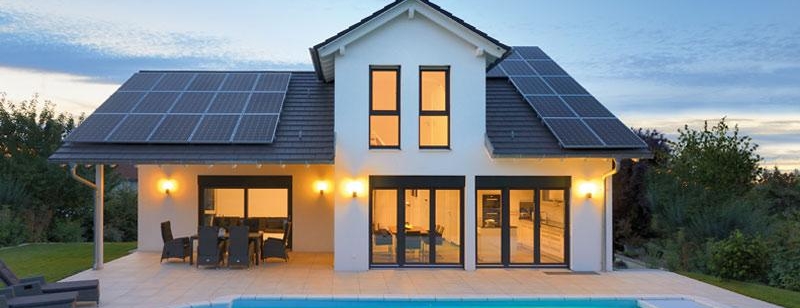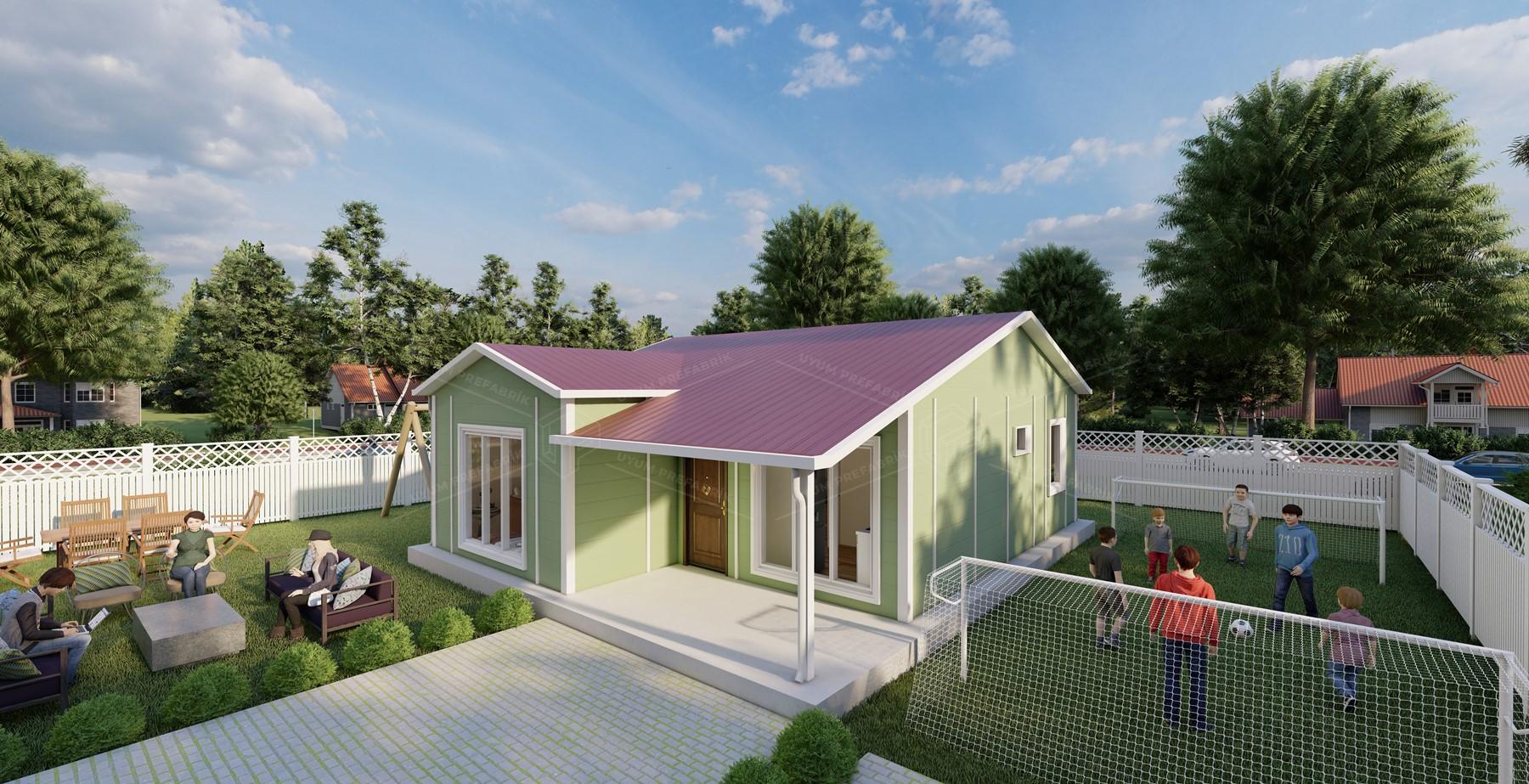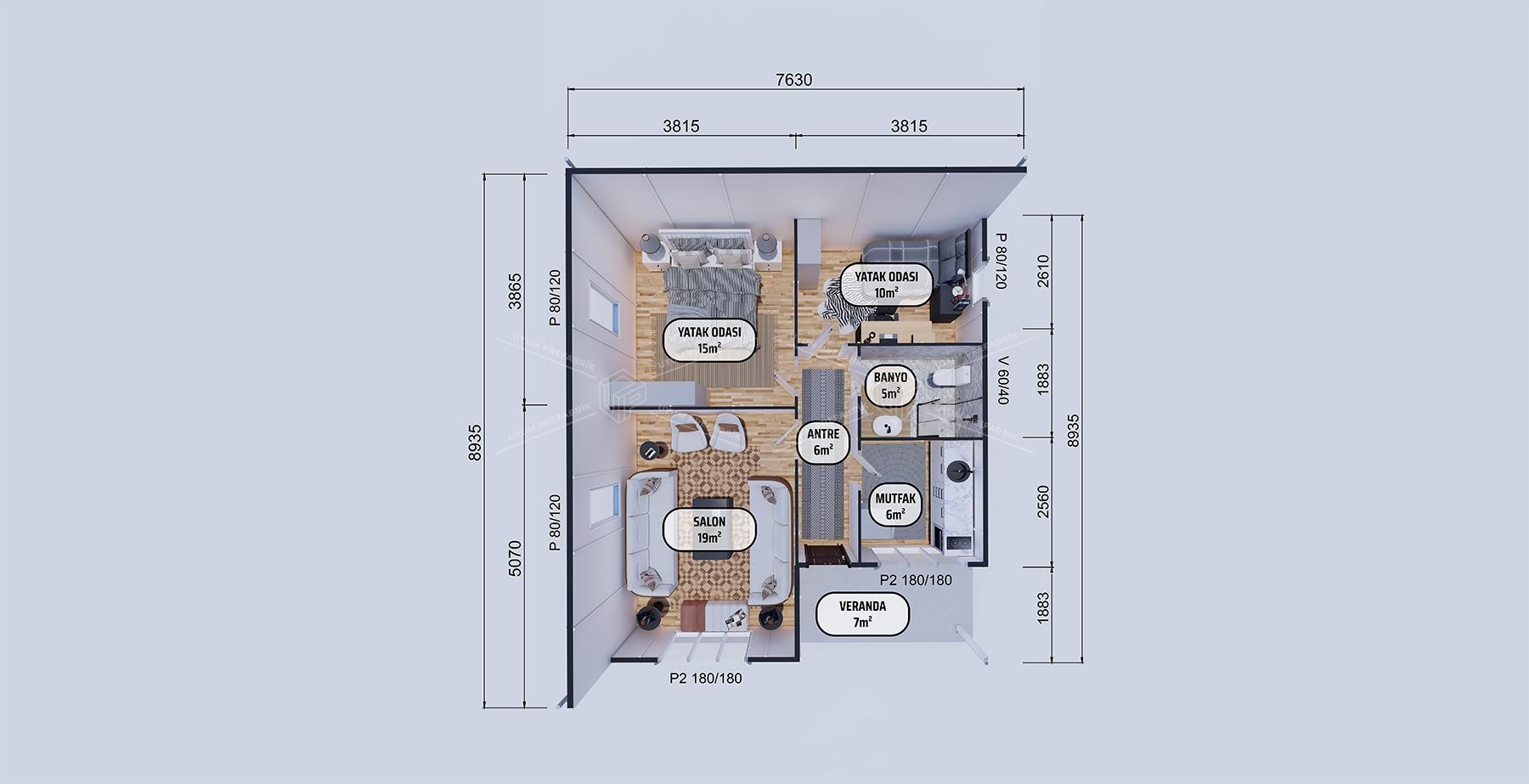What Should You Pay Attention to When Buying a Prefabricated House? (10-Point Guide)

Prefabricated houses have become increasingly popular today due to their fast construction process and cost advantages. However, there are many important factors to consider when purchasing a prefab home. Here’s a comprehensive guide to help you through the buying process.
- The Importance of Material Quality in Choosing a Prefabricated House.
- Checking Suitability for Climate and Geographic Conditions.
- Review the Company’s References and Quality Certificates.
- Evaluate the Price-Performance Balance.
- Warranty Period and After-Sales Support Services.
- Prefabricated House Production and Installation Process.
- Energy Efficiency and Sustainability Features.
- Do Not Skip Permit and Licensing Processes.
- The Importance of Delivery Time and Production Technology.
- Research Technical Support and Maintenance Services.

1. The Importance of Material Quality in Choosing a Prefabricated House
The durability of prefab homes depends on the quality of materials used. The right materials ensure long-term use and protection against environmental factors.
One of the biggest advantages of prefab houses is that they offer a quick and cost-effective solution. However, in the long term, the quality of the materials used is crucial for both durability and comfort. You should examine the characteristics of material options such as steel construction, insulated panels, wood, and reinforced concrete. Steel is the most commonly preferred durable material in prefab houses. Also, the contribution of exterior cladding and insulation materials to energy savings is important. These details should definitely be considered when reviewing prefab house models.
Detailed Example: In a region with high humidity like the Black Sea, using galvanized steel that is resistant to rust is of vital importance. Otherwise, the structure may deteriorate quickly. Additionally, in Central Anatolia, where summers are hot and winters are very cold, materials with high thermal insulation should be used in wall panels. When reviewing prefab house models, remember that the quality of concrete or panels used must meet standards.
2. Checking Suitability for Climate and Geographic Conditions
The climate and soil structure of your region play a decisive role in your choice of prefab house.
When purchasing a prefab home, it is essential to consider the climate conditions and geographic features of the area where the house will be built. In cold regions, materials must provide insulation, while in hot areas, effective ventilation systems are crucial. The solidity of the ground can affect the installation process and durability of the house. Therefore, a ground survey should be conducted for the area of construction. Prefab house prices may also vary depending on these factors.
Detailed Example: In a hot and arid climate like the Aegean Region, wide windows and roof systems that provide natural ventilation should be preferred. On the other hand, in snowy regions like Eastern Anatolia, reinforced roof systems capable of bearing snow loads and water-resistant exterior cladding are necessary. Prefab house prices may vary according to these regional requirements.

3. Review the Company’s References and Quality Certificates
Purchasing from a reliable manufacturer ensures a long-term investment.
Selecting the right manufacturer is a critical step in the prefab home buying process. It is important to review the company's completed projects, read customer feedback, and evaluate references. Quality certificates such as CE and ISO indicate that the company complies with international production standards. Also, the company's experience and scope of service may influence your decision-making process. Don’t forget to thoroughly research these documents and past projects when buying a prefabricated house.
Detailed Example: By reading reviews from previous prefab home buyers, you can assess the quality of a company’s services. For example, if a company has experienced 3-month delays in delivery, such feedback can alert you to potential issues. Choosing a company with CE or ISO certification guarantees that materials and the production process meet required standards.
4. Evaluate the Price-Performance Balance
When comparing prices, consider not only the cost but also the quality of service you receive.
Prefab home costs vary depending on the type of materials, design features, and additional services. When choosing an affordable prefab house, it's important to focus not just on the price but also on the price-performance ratio. Remember, a house made from low-quality materials can lead to higher expenses in the long term. Additionally, energy-efficient homes may seem costly at first but provide savings over time.
Detailed Example: A prefab house priced at 20,000 TL might be made with low-quality materials and could require significant repairs in a few years. In contrast, a higher-quality model priced at 35,000 TL will last longer and reduce maintenance costs. When comparing prefab house prices, be sure to consider these long-term expenses.

5. Warranty Period and After-Sales Support Services
Warranty and after-sales services provide security for your prefab home investment.
In prefab homes, the warranty period and after-sales services offer important assurance for the buyer. Technical support from the manufacturer can save you from major issues. For example, installation errors or problems with materials can be resolved under warranty. Companies offering after-sales maintenance and technical support are also more reliable in terms of customer satisfaction.
Detailed Example: If you notice a gap in the roof during installation, a company that provides after-sales support can quickly resolve it under warranty. If you buy from a company without technical support, you’ll have to fix the issue yourself, potentially incurring additional costs. Make sure the warranty period is at least 5 years.
6. Prefabricated House Production and Installation Process
A well-planned production and installation process ensures smooth delivery of your home.
Prefabricated houses are manufactured in a factory and then assembled on site. To ensure a smooth process, the manufacturer must stick to the project timeline. Check the warranty coverage for any damage that may occur during transport and installation. Additionally, the technologies used in production affect both the durability and aesthetic appearance of the home.
Detailed Example: To avoid transport-related damages during installation, check the quality of prefab house packaging. For instance, if a customer reports scratches on panels during shipping, you should ask how the company handles such issues. Also, the experience of the assembly team is critical for structural integrity.

7. Energy Efficiency and Sustainability Features
Energy-efficient prefab houses benefit both the environment and your budget.
Prioritizing materials and designs that support energy savings in prefab homes reduces long-term costs. Environmentally friendly solutions like insulated panels, double-glazed windows, and solar panels may seem expensive initially but will lower your energy bills.
Detailed Example: A prefab home equipped with solar panels can reduce your electricity bill by up to 30%. Double-glazed windows and insulated panels lower heating costs in winter. Although initially more expensive, such features offer economic benefits in the long run.
8. Do Not Skip Permit and Licensing Processes
Handling legal procedures correctly prevents future issues.
When purchasing a prefab home, you must obtain the necessary permits and licenses for construction. This includes approvals from the municipality, project approval, and occupancy permits. It is advantageous if the manufacturer can guide you through this process smoothly.
Detailed Example: For instance, a customer who built their prefab house without completing the permit process faced a demolition order from the municipality. To avoid such issues, make sure the manufacturer offers guidance in the licensing process. Also, don’t forget that an occupancy permit is required.

9. The Importance of Delivery Time and Production Technology
Next-generation production technologies make a difference in the quality and aesthetics of prefab homes.
The delivery times and production technologies offered by the prefab home manufacturer determine how quickly you can move into your home. Homes built using new technologies are completed faster and offer superior durability. Reviewing the production process and technology in detail makes your decision-making easier.
Detailed Example: Prefab homes produced using next-gen 3D printing technologies are completed 40% faster than traditional methods. Additionally, these technologies enable more aesthetic and customizable designs. Choose companies that provide a clear delivery timeline.
10. Research Technical Support and Maintenance Services
After-sales maintenance and technical support services ensure the longevity of your home.
After purchasing a prefab home, the maintenance services offered by the company are crucial for dealing with technical issues. You should understand the scope of technical services, especially for material wear or post-installation adjustments. These services extend the life of your home and help you avoid potential costs.
Detailed Example: Over time, roof coverings in prefab homes may develop water leakage. Companies that provide technical service can resolve these issues with regular maintenance. For example, a company offering annual maintenance can detect structural problems early and prevent costly repairs.

Conclusion: Make an Informed Choice When Buying a Prefabricated House
Buying a prefab house can be both an economical and long-term investment when decisions are made with the right information. Throughout this process, it's essential to pay attention to many details, from material quality to manufacturer selection, from climate suitability to after-sales support services. A prefab house built with quality materials, energy-efficient, and suitable for your region's geographic conditions opens the door to a comfortable life.
Remember, price is just a starting point; what truly matters is the quality of the service you receive. Also, fully completing legal procedures prevents potential legal problems in the future. Choosing a reliable manufacturer and considering aspects like warranty and technical support will offer you significant advantages in this process.
In short, by taking a conscious and detailed approach when buying a prefab house, you can save both time and money and own your dream home smoothly. With the right choices, your prefab home will offer a comfortable, aesthetic, and sustainable living space. 😊
Let's Shape Your Ideas and Projects Together
Get a Quick Price!
